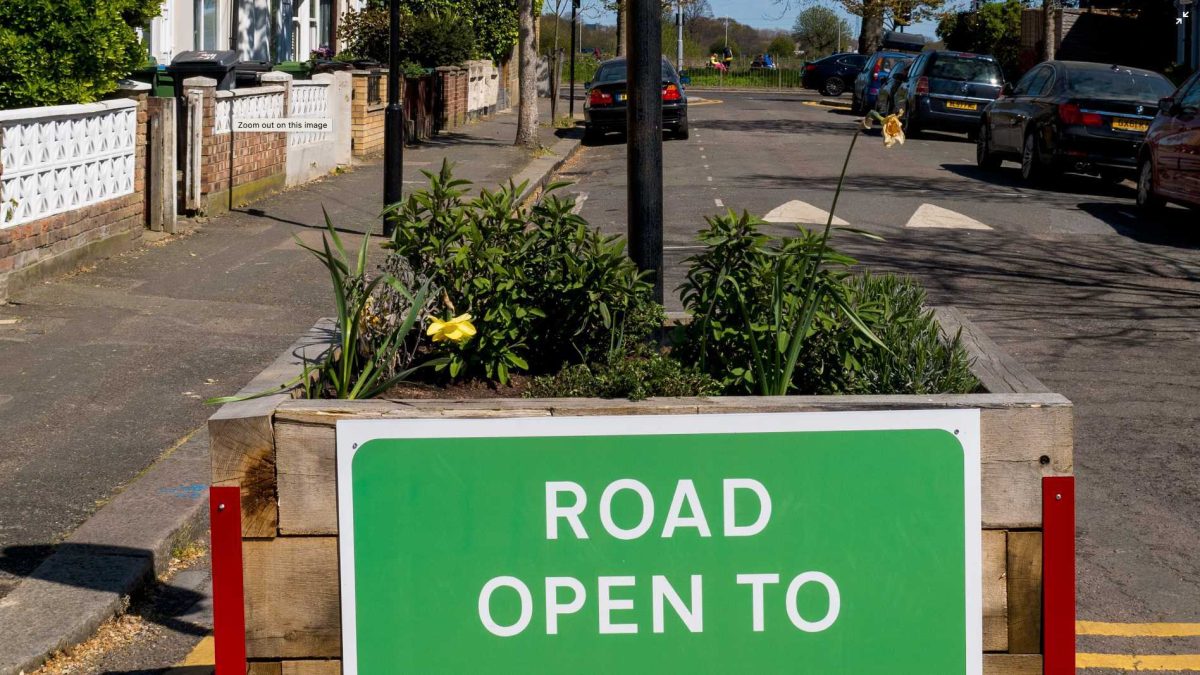
The Public Perception of Cobbled Speed Tables
Do Aesthetics Improve Acceptance?
As an expert in the highways sector for 3 decades, I’ve noticed the evolution of road safety measures and their varying levels of public reception. Among these, cobbled speed tables stand out, not just for their efficacy in calming traffic but notably for their aesthetic appeal. It’s time we addressed a critical question: Does the enhanced aesthetic of cobbled speed tables improve their acceptance among the public? My firm belief, grounded in years of observation and interaction, is that aesthetics play a pivotal role in the public’s acceptance of such safety measures.
The Visual Impact of Road Safety Measures
Traditionally, speed tables, like their cousins speed bumps and rumble strips, have been utilitarian in design and harsh in appearance. Often constructed from stark, plain concrete or asphalt, they are imposed on community streetscapes with little consideration for visual harmony. This approach can lead to a jarring visual impact that often garners negative feedback from local residents and businesses, who feel that these measures detract from the visual appeal of their environments.
Cobbled speed tables, however, challenge this status quo by offering a solution that not only slows traffic but also enhances the streetscape. Made from materials that mimic cobblestones, these speed tables blend more naturally into both historic and upscale neighbourhoods, where maintaining aesthetic quality is paramount. The textural and colour variations of these materials can be tailored to complement the local architectural style, making them appear less as foreign intrusions and more as integral, thoughtfully designed aspects of the roadway.
Enhanced Public Engagement and Acceptance: Deepening Community Involvement
With urban development and road safety enhancements, securing community buy-in is not just beneficial; it is essential for the success and sustainability of the initiatives. Cobbled speed tables, with their unique blend of aesthetic appeal and functionality, present an ideal opportunity to deepen public engagement and bolster community acceptance. Expanding on this aspect reveals just how crucial and transformative comprehensive public involvement can be.
Strategies for Deepening Public Engagement
The process of integrating cobbled speed tables into an urban landscape should begin long before any physical work commences. It involves a series of strategic engagements designed to not only inform but also involve the community in meaningful ways:
- Public Consultations: Hosting regular public consultations can provide a platform for presenting the benefits of cobbled speed tables, addressing potential concerns, and gathering valuable feedback. These sessions should be accessible, held at various times to accommodate different schedules, and actively promoted to ensure a broad segment of the community can participate.
- Interactive Workshops: Conducting workshops where community members can view and interact with different cobbled designs and materials helps demystify the changes and allows people to feel a tangible connection to the project. These workshops can include simulations or virtual reality experiences that show the before and after scenarios of installing cobbled speed tables, offering a vivid comparison that highlights safety improvements and aesthetic enhancements.
- Feedback Mechanisms: Establishing clear and accessible feedback channels is crucial. This could be through digital platforms, suggestion boxes in community centres, or designated community liaison officers who can gather input and answer questions throughout the project duration. Active listening and responsive communication help build trust and demonstrate that public opinions are valued and considered in decision-making processes.
- Visibility of Quick Wins: Implementing pilot projects in high-visibility areas can serve as a practical demonstration of how quickly cobbled speed tables can be installed and their immediate benefits. Showcasing these quick wins helps to alleviate common fears about prolonged construction and its associated disruptions.
Building Trust Through Transparency
Transparency throughout the planning, decision-making, and implementation phases is critical in fostering trust and cooperation from the community. This includes clear communication about the timelines, expected disruptions, benefits, and reasons why cobbled speed tables were chosen over other options. Regular updates about the project’s progress, adjustments made based on community feedback, and post-installation reviews are practices that reinforce a commitment to transparency and accountability.
Celebrating Community Identity and Heritage
Cobbled speed tables can be designed to reflect local heritage and cultural themes, turning a functional road safety feature into a point of community pride. Engaging local artists or cultural groups in the design process can transform these installations into community landmarks that celebrate local identity and history, further enhancing public appreciation and support.
Enhanced public engagement and acceptance are not merely by-products of well-implemented projects; they are indicators of a deeply inclusive approach that values and prioritises community input and experience. By actively involving residents in the transformation of their streets through the installation of cobbled speed tables, local authorities can ensure these changes are not just accepted but welcomed as valuable improvements to the communal fabric.
Case Studies and Feedback
To provide a more robust analysis, let’s delve deeper into specific case studies where cobbled speed tables have been implemented and the subsequent feedback received from those communities. These examples highlight not only the aesthetic acceptance but also the functional impact, providing a clearer picture of how well these measures integrate into different environments.
Case Study 1: Historical Market Town
In a well-preserved market town known for its Victorian architecture and significant tourist traffic, traditional speed calming measures were met with strong local opposition due to their modern, intrusive appearance. The introduction of cobbled speed tables was a strategic response, designed to blend with the existing cobblestone streets and historical character.
Post-installation surveys indicated a 90% approval rating from local businesses and residents, citing that the cobbled speed tables preserved the town’s aesthetic while effectively slowing traffic. Additionally, there was a notable increase in pedestrian foot traffic, suggesting improved safety perceptions that positively impacted local commerce.
Case Study 2: Suburban Residential Area
In a suburban area characterised by modern housing and active community spaces, the initial installation of standard asphalt speed tables had prompted complaints regarding both their appearance and the noise associated with their use. The subsequent replacement with cobbled speed tables led to a marked change in community response. Resident feedback highlighted not only the improved street appearance but also a reduction in noise, as the cobbled design offered a smoother transition for vehicles. The local council reported a decrease in complaints and an increase in positive engagements at community meetings discussing further road safety improvements.
Case Study 3: Urban Business District
An urban business district faced challenges with speeding along a main thoroughfare that also served numerous cafes and shops. The installation of cobbled speed tables was part of a broader streetscape enhancement project, aiming to improve pedestrian safety without detracting from the urban aesthetic valued by shop owners and patrons.
Follow-up studies conducted by the local authority showed a 75% positive feedback loop, where shop owners reported satisfaction with the traffic calming that did not detract from the street’s visual appeal or accessibility. Furthermore, pedestrian traffic increased, and there was a recorded drop in near-miss incidents, illustrating the dual benefits of safety and enhanced business visibility.
These case studies vividly illustrate that cobbled speed tables do more than calm traffic; they enhance community acceptance and contribute positively to local environments. They prove that thoughtful integration of road safety measures with local architectural and cultural values not only mitigates the visual impact but also boosts community support, making these projects more successful in both safety outcomes and public satisfaction.
The acceptance of cobbled speed tables serves as a testament to the power of aesthetics in public infrastructure. As we continue to innovate in the field of road safety, it is imperative that we do not overlook the importance of design and its impact on public perception and acceptance. Cobbled speed tables are more than just traffic calming measures; they are a lesson in the value of integrating functionality with aesthetics, proving that the best solutions are those that respect and enhance their environment. The future of road safety measures should not only be effective but should also enrich the spaces they occupy, fostering community acceptance and appreciation.
Minimising Disruption: Decreasing Road Closure Time through Quick-Setting Cobbles
One of the primary concerns for any urban planning or road safety project is the impact of construction on daily life, particularly in terms of road closures. Extended road work can lead to significant disruptions, affecting local businesses, commuters, and the general public. Addressing this concern effectively not only involves selecting the right safety measures but also choosing materials and methods that minimise installation time. This is where quick-setting cobbles come into their own as an exemplary solution.
Efficiency of Quick-Setting Cobbles
Quick-setting cobbles have revolutionised the installation process of cobbled speed tables by dramatically reducing the time roads need to be closed for construction works. These cobbles are designed to set and cure at an accelerated rate, allowing for speed tables to be installed and become operational in a fraction of the time traditionally required. This rapid installation process significantly lessens the inconvenience to local communities and reduces the economic impact on businesses that might otherwise suffer from prolonged road accessibility issues.
Case Example: Implementing Quick-Setting Cobbles
A recent project in an urban commercial district showcased the effectiveness of quick-setting cobbles. The area, heavily trafficked and a vital artery for local businesses, required a solution that could be implemented quickly to minimise disruption. The use of quick-setting cobbles allowed the project to be completed overnight, rather than over several days. Local business owners noted the minimal impact on their operations, with many expressing relief and satisfaction at the efficiency of the process. Additionally, the quick completion of the project prevented the usual buildup of traffic that can lead to extended congestion and increased pollution.
Community Benefits and Project Acceptance
The swift nature of projects using quick-setting cobbles also plays a crucial role in improving public perception and acceptance of road safety measures. When residents and businesses see that significant improvements are made without major disruptions, their support for similar future initiatives increases. This positive feedback loop is vital for ongoing community support in urban development projects.
By utilising quick-setting cobbles, cities can not only enhance their aesthetic and safety features but also demonstrate a commitment to minimising disruption, thereby maintaining public support and cooperation. This approach underscores the importance of considering both the functional impact of road safety measures and the process by which they are implemented, ensuring that projects are successful in enhancing safety while respecting the daily rhythms of community life.
Cobbled Speed Tables
Pros
- Less Road Closure Time
- Nicer Aesthetic
- Enhanced Public Acceptance
Cons
- None
















